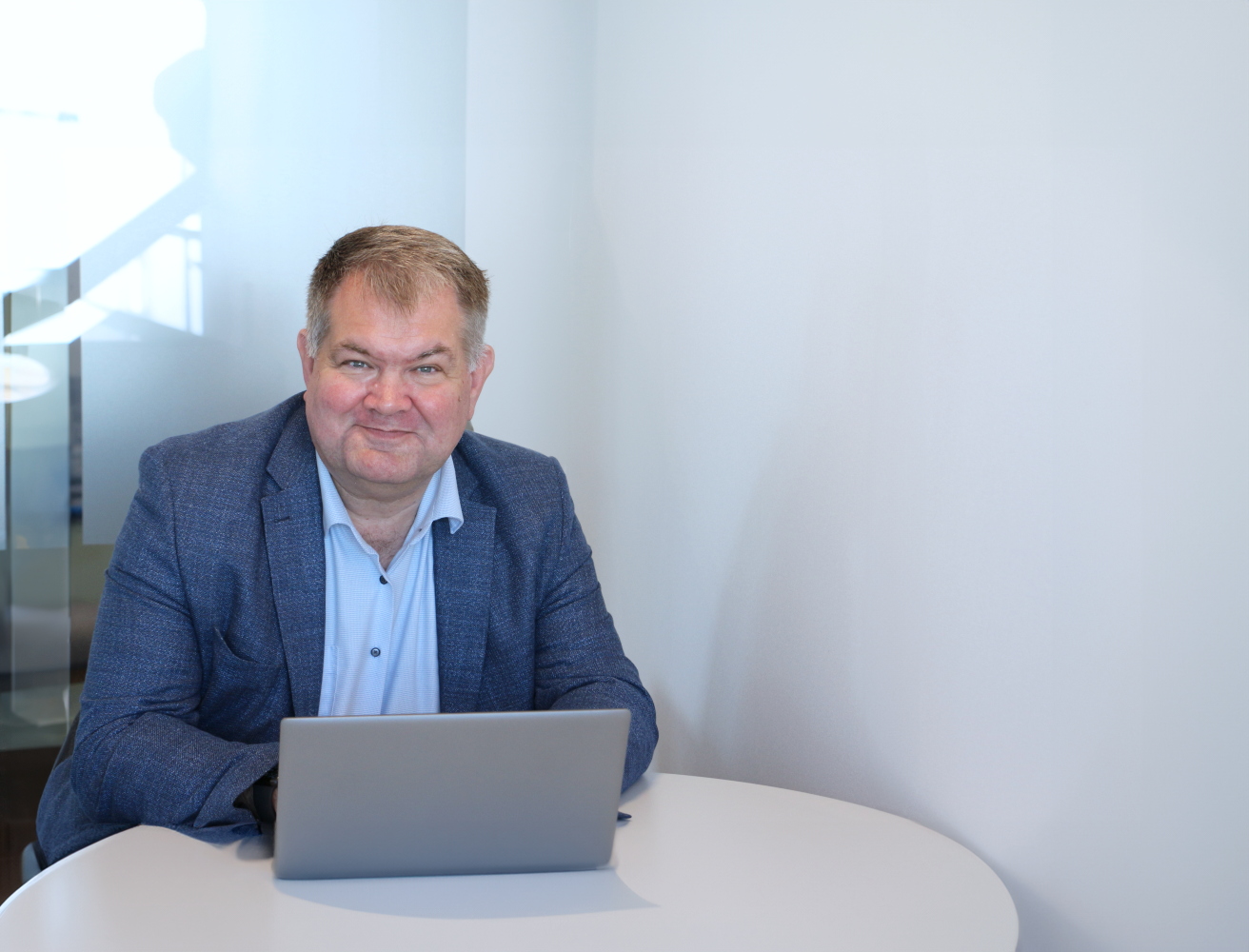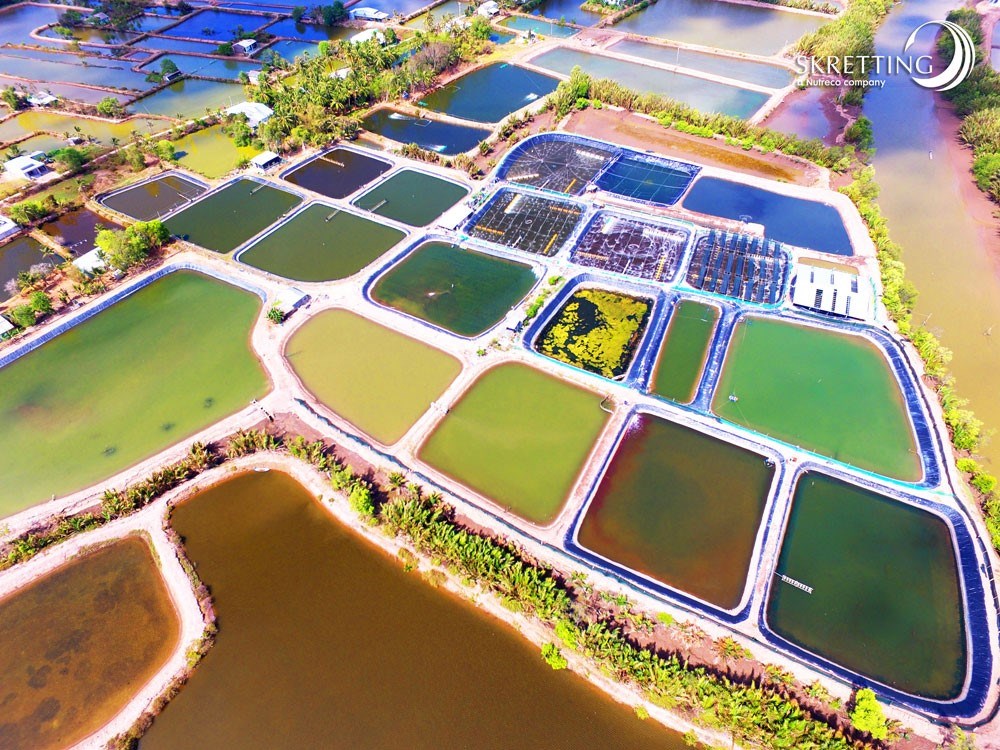Digitalisation has been an integral part of the success of Skretting, and of our customers. Our Digital Innovation Director, Kristoffer Tveit, shares his perspectives on this exciting area.
Digital transformation is key to our success

"There are several reasons why digitalisation is important for the aquaculture industry. Since we are a very complex industry, both in terms of farming, feed, and nutrition, keeping track of just about everything that goes into production is not possible without digitalisation. You cannot survive in the modern world without digitalisation.
Turning data into insights
Data collection is more advanced and frequent than ever. Data volume and quality are increasing, and sensors or equipment that collect data such as temperature readers in the sea or production equipment is readily available and cheap. We can record what is going on every second, creating huge amounts of data. A lot of companies are data rich, but information poor. Simply gathering data isn't enough; you need a strategy to convert it into useful information and action.
Look at land-based recirculation farms – it costs next to nothing to install sensors in every pipe, valve, and tank. Players like Eruvaka who develop cloud-based aquaculture pond management solutions including real-time monitoring and smart feeders, pick up affordable equipment and put it together in a box that can be installed in a shrimp pond. By translating the data into useful information like “how much feed should I give the shrimp in the next hour?” we can automate the feeding process. This is how technology has enabled us to meet business and customer demands - by leveraging data for better decision-making.
A lot of companies are data rich, but information poor. Simply gathering data isn't enough; you need a strategy to convert it into useful information and action.
Predicting and shaping the future
Automating predictions about harvest times, feed requirements, and price trends helps us anticipate and shape the future of aquaculture. This is our top goal: not just knowing about tomorrow, but also automatising it. Guessing what should happen tomorrow is not too hard; it’s guessing what should happen in a year that demands real effort.
AI and data science at Skretting
We spend most of our days reading statistics and graphs that are trying to tell us something, and it’s easy to get information overload. At Skretting, we are lucky to have several data scientists in our team who create dashboards that streamline how information is presented, focusing on the key metrics. My prediction is that we will need more of these capabilities in the future; we will still need the human factor. At the same time, early-stage AI tools and data science play more and more significant roles in our operations. We are embracing AI as an integral part of our strategy. By using advanced methods, we improve forecasting, prediction, and automation.
At Skretting, we are lucky to have several data scientists in our team who create dashboards that streamline how information is presented, focusing on key metrics, and reducing the information overload.
-
What have been our biggest achievements when it comes to digitalisation?
The aquaculture industry generally and Skretting specifically were early to realise that there was a pattern to growing and feeding salmon. We started creating feeding tables and growth models in the early 1990s, which developed into our digital forecasting suite, AquaSim, generating growth models not just for salmon, but a wide range of other fish and shrimp species. That was quite a milestone! We are still building on the modelling and mathematics from that.
Then, on the 26th of October 2019, at 11 o’clock, we moved all our data to the cloud with Microsoft Azure. From then on, AquaSim ran solely in the cloud environment. It’s one thing to move current activity to a pure cloud-based environment; what’s more important is the opportunities it brought with it. Moving to the cloud allowed us to collect, connect, handle and map data in much larger volumes, and includes tools and methodologies that are not available outside of a modern cloud environment.
There is increasing demand to be able to track sustainability efforts on every product. Over the last three decades, we have tracked and traced our raw materials, nutrients and more. Now, there is a demand for even more detail, such as all the neergy consumed, how far our raw materials travel, and sustainability efforts for every product. All of it has to be measured, tracked and traced down to the smallest detail. Everything is tied together on a much bigger scale, and every data point connected to something else. It’s a milestone that we can now place everything together on a timeline.
Our biggest success story on this journey is Skretting 360+, taking our digital offering one step further through a set of innovative tools and comprehensive services. Skretting 360+ has revolutionised and digitalised shrimp farming in Latin America, and is a comprehensive digital solution that optimises feeding, farming, and health management. That was not just an achievement for the digital innovation team, but a joint effort across Skretting Innovation, Skretting LatAm, Eruvaka and partners. Together, we came up with a solution that really changed history.
-
Why have we under-communicated our efforts and achievements?
Our digital advancements have been under-communicated before due to their complexity. It is not easy to explain something intangible, and it’s difficult for nerds like me to transfer my enthusiasm. But a lot of exciting developments are going on behind the scenes that we should talk about. Simplifying and sharing these innovations more effectively can help convey our achievements to a broader audience."
